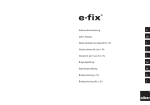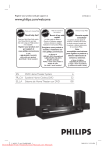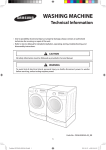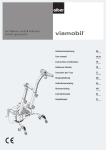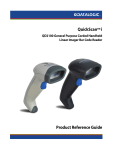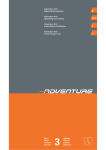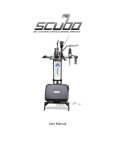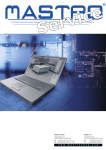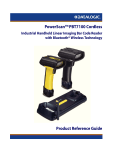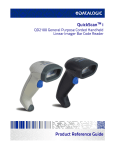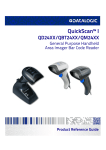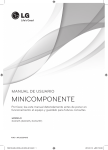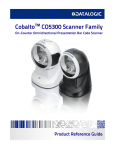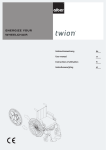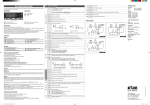Download User Manual
Transcript
Adventure A10 Informationen für Therapeuten und Fachhändler D Adventure A10 Information for Therapists and DME Dealers GB/US Adventure A10 Informations pour les thérapeutes et les commerçants spécialisés F Adventure A10 Informazioni per i terapisti e rivenditori I 3 Neu! New! Noveau! Nuovo! AB_Therap_A10_U1-4_02012008.indd1 1 Auflage Edition Edition Edizione 02.01.2008 13:24:03 Uhr AB_Therap_A10_U1-4_02012008.indd3 3 Adventure A10 Informationen für Therapeuten und Fachhhändler D Adventure A10 Information for Therapists and DME Dealers GB/US Adventure A10 Informations pur les thérapeutes et les commerçants spécialisés F Adventure A10 Informazioni per i terapisti e rivenditori I 02.01.2008 13:24:04 Uhr Contents 1 Mechanical adjustments to the adventure 1.1 1.2 1.3 1.4 1.5 1.6 1.7 1.8 1.9 1.10 1.11 1.12 1.13 1.13.1 1.13.2 1.14 1.15 1.16 1.17 1.17.1 1.17.2 1.17.3 1.18 Armrest height adjustment Armrest length adjustment Armrest sideways adjustment Backrest height adjustment only function seat (comfort and standard upholstery) Backrest angle of inclination adjustment Function seat Backrest angle of inclination adjustment Standard seat Seat length adjustment Function seat (standard and comfort upholstery) Leg support angle adjustment Function seat Leg support length adjustment Standard and function seats Leg support footrest angle adjustment Function seat Leg support footrest length adjustment Standard and function seats Interface instructions Adjusting the chassis springing and damping General information Adjusting the rear springing Setting the direction indicators Setting the seat position Function seat Setting the seat position Standard seat Fitting mudguards (optional extra) Mudguards for the steering wheels Mudguards for the powered wheels Fitting rear reflectors Control unit length adjustment 2 Settings on the control unit General information regarding programming mode Driving programs Changeable parameters Activating service mode Selection of the parameter settings Indoor/Outdoor Changing the parameters Reverting to factory parameters settings Parameter table adventure Version 6 km/h adventure Version 10 km/h adventure Version 12 km/h Fault detection / fault analysis codes Fault indications on the display 2.1 2.2 2.3 2.4 2.5 2.6 2.7 2.8 2.8.1 2.8.2 2.8.3 2.9 2.10 AB_Therap_A10_GB_ms.indd 1 4 4 6 7 8 9 10 11 12 13 14 15 16 16 17 18 19 20 21 21 22 22 23 24 24 25 28 29 30 31 32 32 33 34 35 35 02.01.2008 11:40:28 Uhr General notes For the work procedures described in this information bulletin you will need a set of hexagon socket keys (Allen keys) 2.5 to 8 mm. Ordering information for spare parts can be found in our product manual. alber offers specialist dealers for medical accessories training courses for repairing the adventure and other alber products. Standard seat The adventure wheelchair is now equipped with the functional or Recaro (optional) seating system and no longer with the standard seat. The information on the standard seat contained in this brochure only refers to possible adjustments to the adventure wheelchairs that are still equipped with the standard seat. AB_Therap_A10_GB_ms.indd 2 02.01.2008 11:40:29 Uhr 1 Mechanical adjustments to the adventure 1.1 Armrest height adjustment – Loosen the two screws [1] located in the side support. – Push the armrest [2] to the desired height. – Tighten the two screws [1] again. 2 1 1.2 Armrest length adjustment – Loosen and remove the two screws [3] located in the side support under the upholstery. 3 AB_Therap_A10_GB_ms.indd 3 3 02.01.2008 11:40:41 Uhr – Pull the armrest [2] completely out of the holder [4]. – Loosen the two screws [6] located underneath the upholstery [5]. � – Push the moveable part [7] to the desired position. – Tighten the two screws [6] again. – Push the armrest [2] back into the holder [4]. 2 4 6 76 – Screw the armrest [2] back onto the side support [8]. 5 � 2 4 8 AB_Therap_A10_GB_ms.indd 4 2 02.01.2008 11:40:46 Uhr 1.3 Armrest sideways adjustment 9 – Tilt the entire seat [9] forwards. – Loosen the two screws [10] located under the seat. – Push the complete armrest [2] into the desired position. � � 2 ! AB_Therap_A10_GB_ms.indd 5 10 – Tighten the two screws [10] again. – Fold the seat carefully back down onto the chassis. Check the position of the armrest [2] in relation to the direction indicators. If the armrest bumps into the direction indicators, then they will have to be adjusted too (see chapter 1.14). 02.01.2008 11:40:52 Uhr 1.4 Backrest height adjustment Only Function seat (comfort and standard upholstery) 11 – Remove the cushion from the backrest. – Loosen and remove the 4 screws that hold the backrest to the support bracket [11]. – On the inside of the backrest there are 3 holes in each of two rows which are normally covered by the upholstery. Feel for these holes with a sharp object. 12 12 12 12 – Select the hole [12] which will provide the desired height for the backrest. – With a sharp knife, cut an opening into the upholstery over the chosen holes. – As an alternative to a knife a soldering iron may also be used. When the screw holes melt it should leave an even, clean and heat-sealed border around the holes. – Screw the backrest back onto the support bracket [11] in the height position you have selected. – Replace the cushion on the backrest. AB_Therap_A10_GB_ms.indd 6 02.01.2008 11:40:58 Uhr 1.5 Backrest angle of inclination adjustment Function seat 14 – Loosen the screws [13] in the support bracket. 11 – Push the entire backrest [14] to the desired angle of inclination. – Tighten the screws [13] again. 13 ! AB_Therap_A10_GB_ms.indd 7 13 By adjusting the angle of inclination, the height of the backrest is also altered. It may be necessary to re-set the height (see chapter 1.4). 02.01.2008 11:41:04 Uhr 1.6 Backrest angle of inclination adjustment Standard seat – Loosen and remove the four star grips [15]. – Pull or push the backrest [14] to the desired position. – Screw the four star grips [15] back in and tighten them. 14 � 15 14 ! AB_Therap_A10_GB_ms.indd 8 By adjusting the angle of inclination, the height of the backrest is also altered. It may be necessary to re-set the height (see chapter 1.4). 02.01.2008 11:41:07 Uhr 10 1.7 Seat length adjustment Function seat (standard and comfort upholstery) – Pull the cushion off the seat. – Loosen and remove the four screws holding the seat. – On the inside of the seat there are 5 holes in each of two rows which are normally covered by the upholstery. Feel for these holes with a sharp object. 16 16 – Select the hole [16] which will provide the desired seat length for you. – With a sharp knife, cut an opening into the upholstery over the chosen holes. – As an alternative to a knife a soldering iron may also be used. When the screw holes melt it should leave an even, clean and heat-sealed border around the holes. – Screw the seat back on in the position you have selected. – Replace the cushion on the seat. AB_Therap_A10_GB_ms.indd 9 02.01.2008 11:41:11 Uhr 11 1.8 Leg support angle adjustment Function seat – Remove the leg support from the seat. – Loosen the two screws [17] on the top of the leg support. The connecting piece [18] is now freely moveable. � � – Set the desired angle. – Tighten the two screws [17] again. – Attach the leg support back onto the seat. 17 17 18 AB_Therap_A10_GB_ms.indd 10 02.01.2008 11:41:14 Uhr 12 1.9 Leg support length adjustment Standard and function seats – Loosen the two screws [19] at the back of the leg support. – Pull or push the lower part of the leg support [20] into the desired position. – Firmly tighten the two screws [19] again. � � 19 20 AB_Therap_A10_GB_ms.indd 11 02.01.2008 11:41:19 Uhr 1.10 Leg support footrest angle adjustment Function seat 13 – Loosen the screws [21] on both sides at the lower end of the leg support. – Push the retainer [22] into the desired position. – Check the retainer and with it the angle of the footrest. If necessary, the retainer [22] may have to be moved again. – If the retainer and with that the desired angle of the footrest are set correctly, then tighten the screws [21] again. � � 21 22 AB_Therap_A10_GB_ms.indd 12 22 02.01.2008 11:41:23 Uhr 14 1.11 Leg support footrest length adjustment Standard and function seats – Loosen the three screws [23] underneath the footrest. – The length can be adjusted by inserting the screws in one of the three sets of holes A, B or C. A B C – Screw the footrest [24] into the desired position. 23 � � 23 23 24 AB_Therap_A10_GB_ms.indd 13 02.01.2008 11:41:25 Uhr 15 1.12 Interface instructions The interface [25] located on the chassis is for the attachment of a peripheral module for the control of external drives. � The cover [26] prevents the interface getting dirty or damaged and must only be removed if a device is to be attached. � 25 26 AB_Therap_A10_GB_ms.indd 14 02.01.2008 11:41:30 Uhr 16 1.13 Adjusting the chassis springing and damping 1.13.1 General information When the adventure is first delivered, the chassis is optimally adjusted to the respective weight of the user and, as a rule, does not need any further adjustment. If a second-hand device is to be used or the body weight of the wheelchair driver should change significantly, then the chassis should be readjusted. Spring Feder (blue, schwarz black or oder red) rot) (blau, Damping Dämpferelement element The spring hardness is principally responsible for the degree of comfort of the chassis and should be selected to match the weight of the wheelchair driver. Basically there are three different degrees of spring hardness available for the respective weight categories: Blue springs: Wheelchair drivers with up to 80 kg body weight Black springs: Wheelchair drivers with from 81 to 120 kg body weight Red springs: Wheelchair drivers with from 121 to 140 kg body weight Determine into which weight category the wheelchair driver falls and whether the colour of the installed springs corresponds. Under some circumstances the springs will have to be exchanged or readjusted. This must only be undertaken by an authorised and trained dealer or by the alber Service Center (phone +49 (0) 800 90 96 250). The rear springs are principally responsible for the comfort of the ride and they can be finely set thanks to the adjustable spring preload. The front springs need to be readjusted only in rare cases (spring replacement necessary, significant weight change of the wheelchair driver) and should, as a rule, remain in the position set in the factory. AB_Therap_A10_GB_ms.indd 15 02.01.2008 11:41:31 Uhr 17 1.13.2 Adjusting the rear springing Prior to adjusting the springing the batteries must be removed (see illustration) so that the spring/damper element is completely load-free. The preload of the rear springs [27] can be set with the help of several differently coloured spacer gauges that can be obtained from alber or with a conventional one. – Place the spacer gauge [28] against the spring [27] as shown in the diagram. The spacer gauge [28] must make contact with the spring buffer [29]. – Turn the adjusting wheel [30] on the spring. nt fro 27 k bac 29 28 – You have set the correct spacing, as taken from the table below, when the adjustment wheel [30] makes contact with the spacer gauge. 30 ! Make sure that you set the same figure for both rear springs. The maximum additional load of 140 kg should never be exceeded. Spacer gauge Identifier: blue (for blue springs) To 50 kg 84 mm To 60 kg 83 mm To 70 kg 82 mm To 80 kg 80 mm Identifier: black (for black springs) To 90 kg 83 mm To 100 kg 81 mm To 110 kg 79 mm To 120 kg 77 mm Identifier: red (for red springs) To 130 kg 79 mm To 140 kg 77 mm ! Please inform the wheelchair occupant that a readjustment of the front* and rear suspensions will be necessary if he or she gains or loses substantially in weight (for example, due to a particular illness). If the user gains a large amount of weight there is a danger that the chassis may be damaged; if there is a large loss in weight the comfort during driving is reduced. * To carry out installation work and adjustments to the front part of the chassis, prior training by alber is a prerequisite. Please contact us for this. AB_Therap_A10_GB_ms.indd 16 02.01.2008 11:41:35 Uhr 18 1.14 Setting the direction indicators 31 When the armrest is adjusted sideways (see chapter 1.3), it may prove necessary to re-position the two direction indicators [31]. 31 – Loosen the two screws [32]. – Pull or push the direction indicator [31] into the desired position. There should always be a small space (approx. 5 mm) between the direction indicator [31] and armrest. � � – Tighten the two screws [32] again. 31 AB_Therap_A10_GB_ms.indd 17 32 02.01.2008 11:41:35 Uhr 19 1.15 Setting the seat position Function seat – Loosen the screws [34] on both sides of the holder stay [33]. 34 33 – Pull or push on the holder stay [33] so that the entire seat holder moves into the desired position. – Firmly tighten the two screws [34] on both sides of the holder stay [33] again. AB_Therap_A10_GB_ms.indd 18 02.01.2008 11:41:36 Uhr 20 1.16 Setting the seat position Standard seat 35 33 – Loosen and remove the screws [35] on both sides of the holder stay [33]. – Place the holder stay [33] against the hole positions desired. – Screw the holder stay [33] tight again using the screws [35]. AB_Therap_A10_GB_ms.indd 19 02.01.2008 11:41:40 Uhr 21 1.17 Fitting mudguards (optional extra) 1.17.1 Mudguards for the steering wheels – Thoroughly clean the connecting surface of the fork. It must be free of all dirt and grease. – Remove the self-adhesive foil [36] from the mudguard. 36 – Push the mudguard [37] under the fork of the steering wheel. Make sure it is positioned properly. – Press the mudguard [37] firmly against the steering wheel fork for a short time. � AB_Therap_A10_GB_ms.indd 20 37 02.01.2008 11:41:42 Uhr 22 1.17.2 Mudguards for the powered wheels – Position the angle bracket of the mudguard [38] on the holder [39], as shown in the diagram. – Screw the mudguard [38] onto the holder [39]. 39 38 1.17.3 Fitting rear reflectors – Remove the adhesive foil [40] from the back of the rear reflectors [41]. – Stick the rear reflectors [41], as shown in the diagram, onto the back of the batteries (the wording TOP/DOT/TOP must be at the top) 40 41 41 ! AB_Therap_A10_GB_ms.indd 21 Driving with mudguards and without rear reflectors is not permitted. 02.01.2008 11:41:46 Uhr 23 1.18 Control unit length adjustment – Loosen the two screws [42] in the bracket [43] situated underneath the armrest. 42 – Push the bracket holding the control unit to the desired position. – Tighten the two screws [42] again. AB_Therap_A10_GB_ms.indd 22 02.01.2008 11:41:49 Uhr 2 Settings on the control unit 24 2.1 General information regarding programming mode In order to meet the different requirements of customers and the various sorts of disablement, the adventure provides a wide range of variable driving parameters. Programming can be carried out directly via the control unit without any additional device. Only a programming key, which is delivered with every new adventure, is needed. Programming key Programmierschlüssel ! For safety reasons, the programming key should not be given to the user. Driving parameters must only be changed by qualified persons (e.g. a therapist, a specialist dealer). After the program has been changed, a trial run should be undertaken, supervised by a qualified person, to ensure that the user can cope with the new driving characteristics. 2.2 Driving programs There are two driving programs available for the adventure – Indoor and Outdoor modes. To a great extent, both modes can be programmed independently of each other, so that travel indoors can be based on different parameters from travel outdoors. It is also possible to make individual settings to reflect the state of health and disablement of the wheelchair occupant. The essential differences between the two modes are: – In Outdoor mode the wheel at the outside of a curve is accelerated, resulting in nimble driving conduct – In Indoor mode the wheel at the inside of a curve is braked, resulting in driving conduct that is tolerant and predictable AB_Therap_A10_GB_ms.indd 23 02.01.2008 11:41:50 Uhr 25 2.3 Changeable parameters The following parameters may be adjusted to user requirements directly via the control unit, without any external programming device: Select parameter set Indoor / Outdoor – The adventure allows the parameters for Indoor and Outdoor use to be programmed independently of each other. For example, slow and fine for indoors and with maximum speed and precise straight ahead travel for outdoors (factory setting). – The following parameters change both for Indoor and Outdoor mode when they are re-programmed and they cannot be saved as different for the two modes: – 9 [Self switch off time] – 10 [Driving signal displacement] always apply to both – 12 [change of direction joystick] Indoor and Outdoor – Can also be set according to the state of health or mind of the user, e.g. weak or strong constitution. Maximum speed forwards – Determines the maximum attainable speed. – Can be set in 5 steps (20 %, 40 %, 60 %, 80 % and 100 %). – Reduction of speed is recommended for beginners or for use exclusively indoors. – Reduction also sensible for older (geriatric) users. Maximum speed backwards – Determines the maximum attainable speed. – For safety reasons, it is limited to a maximum of 70 % of the set maximum speed forwards. – Reduction recommended if a very slow speed is desired (e.g. for drivers with bad coordination, older users and for travel indoors). Acceleration time – Time taken to reach the maximum set speed. – Also perceived by the user as “Reaction” (prompt / sluggish). – Reduction for tremor or ataxia. – Increase to enable small obstructions to be overcome more easily at low speeds (e.g. thresholds indoors). Slow down time – The time taken for braking from the maximum speed to the desired speed or to a standstill. – Reduction if very gentle driving is required at lower speeds (e.g. for users with diminished upper body / trunk stability). – Increase if very precise driving is required at lower speeds (e.g. confined living room) or rapid reaction is desired. AB_Therap_A10_GB_ms.indd 24 02.01.2008 11:41:53 Uhr 26 Turning speed – Determines the maximum speed at which an arc of a circle or curve is travelled at. – Reduction produces more stable straight forward driving at high speeds; at low speeds sluggish / tolerant. – Increase at lower speeds (indoors) improves travel round tight curves; at higher speeds more nervous / rapid reaction. Turning acceleration / slow down (sensitivity) – Time taken to attain maximum turning speed. – Also usually described as sensitivity or reaction. – 5 bars = rapid reaction / acceleration. – Reduction down to 1 or 2 bars to adjust for tremor or ataxia. Audible signals – Switches audible signal on / off, for example a beep when error messages appear or for battery state-of-charge warning. Braking onset – The time delay until the electromagnetic parking brakes are applied after the last issuance of a driving command (displacement of the joystick). – Without time delay (1 second): if an immediate safe stand is required (e.g. on approaching lightly sloping kerbs / ledges). – With time delay (30 seconds): avoids constant braking onset – undesirable “clicking” noise prevented. Self switch off time – The time until the adventure switches itself off (to save the battery). – May be set from 1 to 5 hours. Joystick through – Attaining the maximum speed dependent on joystick displacement – Setting to 1 bar (minimum) means that: after 50% of the way (half displacement of the joystick) the maximum speed will already be reached. A further displacement beyond that does not increase the speed! – Makes sense for those with little muscular strength (MD), with restricted arm and / or hand functions or when used as mouth or chin controller – Setting to 5 bars: the maximum speed is reached when the joystick is fully displaced. AB_Therap_A10_GB_ms.indd 25 02.01.2008 11:41:57 Uhr Battery capacity – To provide most exact battery capacity indication, the battery size can be adjusted for 2 different types of the battery pack. – Factory pre-set according to battery size ordered. 27 Change of direction joystick Particularly useful for users who can only displace the joystick in certain directions (e.g. can merely pull it) or if the control unit is fitted in the opposite direction (e.g. with a therapeutic table). Possible changes: – Change the joystick setting to the actual direction of movement – Change forwards / backwards – Change left / right – Change both joystick settings Attention! With changed movement parameter 12 “change of direction joystick” the adventure may only be operated with the bowtype handle for protection against ramming for control unit (optional accessory)! On accidentally bumping into an obstacle, (e.g. a tabletop) without protection against ramming, the joystick will be displaced even more. Consequently the driver will not be able to get out of this situation single-handedly. He will be effectively pinned in. If such a situation should arise, all that the driver can do is to switch off the adventure. Joystick displacement Obstruction: e.g. table edge Direction of movement ! Caution! After changing this driving parameter the user must be given time to adjust to the new driving characteristics very slowly and under professional supervision (at minimum speed). Display option Setting options for various displays on the screen. Possible settings: – Normal display – Driving speed – Daily kilometre counter Note: By pressing the menu button for approx. 3 seconds the daily kilometre counter is set to “zero”. AB_Therap_A10_GB.indd 27 11.12.2008 12:11:09 Uhr Batt · To ba ad · Fac 28 Speed reduction This parameter can only be altered in conjunction with the attachment of a periphery module. Chassis with short or long rocker – Setting 1 bar: More gentle braking (Setting only admissible for chassis with long wheelbase) – Setting 5 bars: Standard setting (without additional functions) Lighting/Direction indicators – Setting 1 bar: functions deactivated – Setting 5 bars: functions activated 2.4 Activating service mode In order to activate service mode you must first insert the programming key [1] into the opening [2] underneath the control unit. 2 1 Then switch the adventure on by pressing the On / Off button [3]. On the display screen [4] the symbol , the code “0“ and a single bar will be shown. 4 3 AB_Therap_A10_GB_ms.indd 27 02.01.2008 11:42:03 Uhr 29 2.5 Selection of the parameter settings Indoor / Outdoor Now you must choose the mode which you wish to change. Initially the mode in which you currently are will be shown. Outdoor Mode The following indicators apply: One bar display = Outdoor mode Two bars display = Indoor mode Indoor Mode To switch from Outdoor to Indoor mode, push the joystick upwards once – the second bar will appear. To switch from Indoor to Outdoor mode, push the joystick downwards once – the second bar will disappear. AB_Therap_A10_GB_ms.indd 28 02.01.2008 11:42:03 Uhr 30 2.6 Changing the parameters After you have established the mode which you wish to change, you can begin with the individual programming. By displacing the joystick to the left or right the various parameters described in chapter 2.3 may be set. The following apply: Displacement to the right: number code (1-15) is increased (change to the next highest parameter). Displacement to the left: number code (1-15) is decreased (change to the next lowest parameter). Displacement upwards: number of bars shown is increased; the currently selected parameter is increased or accepted. AB_Therap_A10_GB_ms.indd 29 02.01.2008 11:42:06 Uhr Displacement downwards: number of bars shown is decreased; the currently selected parameter is decreased or deactivated. ! 31 Parameters, codes and possible settings can be found in the table in chapter 2.8 When programming is complete: – Pull the programming key [1] out of its location underneath the control unit. – The newly programmed driving characteristics are saved automatically. – Carry out a trial run to check out the newly programmed driving characteristics. 1 2.7 Reverting to factory parameter settings The parameters as set in the factory may be reverted to at any time as follows: – Switch the adventure off. – Insert the programming key [1] into the opening [2] located underneath the control unit. – Pull the joystick [5] back and hold it in this position. 2 1 – Then switch the adventure on again by pressing the On / Off button [3]. 4 3 – Wait for approx. 2 seconds until the factory programming is automatically restored. – On the display [4] the information shown on the left will appear. – Pull the programming key [1] out of the control unit again. – The adventure can now be operated again with the parameters as set in the factory. 5 AB_Therap_A10_GB_ms.indd 30 02.01.2008 11:42:11 Uhr 32 2.8 Parameter table 2.8.1 adventure version 6 km/h (Factory settings are marked in bold) Parameter Code Setting Nominal value Driving program 0 1 bar 2 bars Outdoor Indoor Parameter Code Display indication Indoor settings Outdoor settings Maximum 1 speed forwards 1 bar 2 bars 3 bars 4 bars 5 bars 1,3 km/h 2,5 km/h 3,8 km/h 5,0 km/h 6,0 km/h 1,3 km/h 2,5 km/h 3,8 km/h 5,0 km/h 6,0 km/h Maximum speed 2 reverse 1 bar 2 bars 3 bars 4 bars 5 bars 1,8 km/h 2,4 km/h 3,0 km/h 3,6 km/h 4,2 km/h 1,8 km/h 2,4 km/h 3,0 km/h 3,6 km/h 4,2 km/h Acceleration 3 time 1 bar 2 bars 3 bars 4 bars 5 bars 3,2 seconds 2,8 seconds 2,3 seconds 1,8 seconds 1,4 seconds 3,2 seconds 2,8 seconds 2,3 seconds 1,8 seconds 1,4 seconds Slow down time 4 1 bar 2 bars 3 bars 4 bars 5 bars 3,7 seconds 3,2 seconds 2,8 seconds 2,3 seconds 1,8 seconds 3,7 seconds 3,2 seconds 2,8 seconds 2,3 seconds 1,8 seconds Turning speed 5 1 bar 2 bars 3 bars 4 bars 5 bars 22 % (slow) 25 % 28 % 31 % 34 % (fast) 22 % (slow) 25 % 28 % 31 % 34 % (fast) Turning 6 acceleration / deceleration (sensitivity) 1 bar 2 bars 3 bars 4 bars 5 bras 0,09 seconds (slow) 0,06 seconds 0,05 seconds 0,04 seconds 0,03 seconds (fast) 0,19 seconds (slow) 0,13 seconds 0,09 seconds 0,08 seconds 0,06 seconds (fast) Audible signals 7 1 bar 5 bars Deactivated Activated Deactivated Activated Braking onset 8 1 bar 5 bars Time delayed by 30 seconds Immediate (1 second) Time delayed by 30 seconds Immediate (1 second) Self switch off 9 time 1 bar 2 bars 3 bars 4 bars 5 bars 1 hour 2 hour 3 hour 4 hour 5 hour 1 hour 2 hour 3 hour 4 hour 5 hour Joystick throw 10 joystick 1 bar 5 bars 50 % 100 % 50 % 100 % Battery capacity 11 1 bar 5 bars 22 Ah Multipower 17 Ah Panasonic 22 Ah Multipower 17 Ah Panasonic Change of 12 1 bar direction 2 bars joystick 3 bars 4 bars No change Forwards / backwards changed Left / right changed Forwards / backwards and left / right changed No change Forwards / backwards changed Left / right changed Forwards / backwards and left / right changed Display option 13 Normal display Driving speed Daily kilometres counter Normal display Driving speed Daily kilometres counter 1 bar 2 bars 3 bars Speed reduction 14 Only in conjunction with periphery module Only in conjunction with periphery module Chassis with 15 1 bar long or short wheelbase 5 bars More gentle braking (Setting only admissible for chassis with long wheelbase) Standard setting (without additional function) More gentle braking (Setting only admissible for chassis with long wheelbase) Standard setting (without additional function) Lighting/Direction 16 indicator functions deactivated functions activated functions deactivated functions activated AB_Therap_A10_GB.indd 32 1 bar 5 bars 11.12.2008 12:11:17 Uhr 33 2.8.2 adventure version 10 km/h* * Not available in the USA (Factory settings are marked in bold) Parameter Code Setting Nominal value Driving program 0 1 bar 2 bars Outdoor Indoor Parameter Code Display indication Indoor settings Outdoor settings Maximum speed 1 forwards 1 bar 2 bars 3 bars 4 bars 5 bars 2,0 km/h 4,0 km/ 6,0 km/h 8,0 km/h 10,0 km/h 2,0 km/h 4,0 km/h 6,0 km/h 8,0 km/h 10,0 km/h Maximum speed 2 reverse 1 bar 2 bars 3 bars 4 bars 5 bars 1,8 km/h 2,4 km/h 3,0 km/h 3,6 km/h 4,2 km/h 1,8 km/h 2,4 km/h 3,0 km/h 3,6 km/h 4,2 km/h Acceleration 3 time 1 bar 2 bars 3 bars 4 bars 5 bars 8,0 seconds 6,9 seconds 5,7 seconds 4,6 seconds 3,4 seconds 8,0 seconds 6,9 seconds 5,7 seconds 4,6 seconds 3,4 seconds Slow down time 4 1 bar 2 bars 3 bars 4 bars 5 bars 9,2 seconds 8,0 seconds 6,9 seconds 5,7 seconds 4,6 seconds 9,2 seconds 8,0 seconds 6,9 seconds 5,7 seconds 4,6 seconds Turning speed 5 1 bar 2 bars 3 bars 4 bars 5 bars 14 % (slow) 16 % 18 % 20 % 21 % (fast) 14 % (slow) 16 % 18 % 20 % 21 % (fast) Turning 6 acceleration / deceleration (sensitivity) 1 bar 2 bars 3 bars 4 bars 5 bars 0,08 seconds (slow) 0,05 seconds 0,04 seconds 0,03 seconds 0,025 seconds (fast) 0,19 seconds (slow) 0,13 seconds 0,09 seconds 0,08 seconds 0,06 seconds (fast) Audible signals 7 1 bar 5 bars Deactivated Activated Deactivated Activated Braking onset 8 1 bar 5 bars Time delayed by 30 seconds Immediate (1 second) Time delayed by 30 seconds Immediate (1 second) Self switch 9 off time 1 bar 2 bars 3 bars 4 bars 5 bars 1 hour 2 hours 3 hours 4 hours 5 hours 1 hour 2 hours 3 hours 4 hours 5 hours Joystick throw 10 joystick 1 bar 5 bars 50 % 100 % 50 % 100 % Battery capacity 11 1 bar 5 bars 22 Ah Multipower 17 Ah Panasonic 22 Ah Multipower 17 Ah Panasonic Change of 12 1 bar direction 2 bars joystick 3 bars 4 bars No change Forwards / backwards changed Left / right changed Forwards / backwards and left / right changed No change Forwards / backwards changed Left / right changed Forwards / backwards and left / right changed Display option 13 Normal display Driving speed Daily kilometres counter Normal display Driving speed Daily kilometres counter 1 bar 2 bars 3 bars Speed reduction 14 Only in conjunction with periphery module Only in conjunction with periphery module Chassis with 15 1 bar long or short wheelbase 5 bars More gentle braking (Setting only admissible for chassis with long wheelbase) Standard setting (without additional function) More gentle braking (Setting only admissible for chassis with long wheelbase) Standard setting (without additional function) Lighting/Direction 16 indicator functions deactivated functions activated functions deactivated functions activated AB_Therap_A10_GB.indd 33 1 bar 5 bars 11.12.2008 12:11:17 Uhr 34 2.8.3 adventure version 12 km/h (Factory settings are marked in bold) Parameter Code Setting Nominal value Driving program 0 1 bar 2 bars Outdoor Indoor Parameter Code Display indication Indoor settings Outdoor settings Maximum 1 speed forwards 1 bar 2 bars 3 bars 4 bars 5 bars 2,4 km/h 4,8 km/h 7,2 km/h 9,6 km/h 12,0 km/h 2,4 km/h 4,8 km/h 7,2 km/h 9,6 km/h 12,0 km/h Maximum speed 2 reverse 1 bar 2 bars 3 bars 4 bars 5 bars 1,8 km/h 2,4 km/h 3,0 km/h 3,6 km/h 4,2 km/h 1,8 km/h 2,4 km/h 3,0 km/h 3,6 km/h 4,2 km/h Acceleration 3 time 1 bar 2 bars 3 bars 4 bars 5 bars 8,8 seconds 7,6 seconds 6,3 seconds 5,1 seconds 3,8 seconds 8,8 seconds 7,6 seconds 6,3 seconds 5,1 seconds 3,8 seconds Slow down 4 time 1 bar 2 bars 3 bars 4 bars 5 bars 10,1 seconds 8,8 seconds 7,6 seconds 6,3 seconds 5,1 seconds 10,1 seconds 8,8 seconds 7,6 seconds 6,3 seconds 5,1 seconds Turning speed 5 1 bar 2 bars 3 bars 4 bars 5 bars 12 % (slow) 13 % 15 % 16 % 18 % (fast) 12 % (slow) 13 % 15 % 16 % 18 % (fast) Turning 6 acceleration / deceleration (sensitivity) 1 bar 2 bars 3 bars 4 bars 5 bars 0,08 seconds (slow) 0,05 seconds 0,04 seconds 0,03 seconds 0,025 seconds (fast) 0,11 seconds (slow) 0,08 seconds 0,07 seconds 0,06 seconds 0,05 seconds (fast) Audible signals 7 1 bar 5 bars Deactivated Activated Deactivated Activated Braking onset 8 1 bar 5 bars Time delayed by 30 seconds Immediate (1 second) Time delayed by 30 seconds Immediate (1 second) Self switch off 9 time 1 bar 2 bars 3 bars 4 bars 5 bars 1 hour 2 hours 3 hours 4 hours 5 hours 1 hour 2 hours 3 hours 4 hours 5 hours Joystick throw 10 joystick 1 bar 5 bars 50 % 100 % 50 % 100 % Battery capacity 11 1 bar 5 bars 22 Ah Multipower 17 Ah Panasonic 22 Ah Multipower 17 Ah Panasonic Change of 12 1 bar direction 2 bars joystick 3 bars 4 bars No change Forwards / backwards changed Left / right changed Forwards / backwards and left / right changed No change Forwards / backwards changed Left / right changed Forwards / backwards and left / right changed Display option 13 Normal display Driving speed Daily kilometres counter Normal display Driving speed Daily kilomtres counter 1 bar 2 bars 3 bars Speed reduction 14 Only in conjunction with periphery module Only in conjunction with periphery module Chassis with 15 1 bar long or short wheelbase 5 bars More gentle braking (Setting only admissible for chassis with long wheelbase) Standard setting (without additional function) More gentle braking (Setting only admissible for chassis with long wheelbase) Standard setting (without additional function) Lighting/Direction 16 indicator functions deactivated functions activated functions deactivated functions activated AB_Therap_A10_GB.indd 34 1 bar 5 bars 11.12.2008 12:11:17 Uhr 35 2.9 Fault detection / fault analysis codes The adventure software is equipped with an automatic fault detection and analysis system. If a fault is detected in the system, it is shown on the LCD display of the control unit by means of a code number and symbol (see table below). Many faults occur due to badly or incompletely charged batteries (code number 2). As the powered wheels are disengaged for manual operation, the error code ”Brake symbol flashes“ (left or right powered wheel disengaged) also occurs frequently. This can be corrected by engaging the wheels again (see Operating Instructions). 2.10 Fault indications on the display Faults that may occur on your adventure are indicated on the display of the control unit. The following indications are possible: Display indication (letters flash) Control unit symbol flashes Fault description What to do Hardware fault on control panel Excessive battery voltage calibration or EEPROM programming error Replace control unit PCB or control unit EEPROM faulty or wrongly coded 1. Realize works setting 2. Replace control unit if 1. is unsuccessful! Battery voltage range error 1. Battery defective. Check 2 batteries by inserting separately in central position. Check/Replace fuses on battery or replace battery completely if battery is defective! 2. Hardware fault on control unit. Replace PCB / control unit! 3. Battery fully charged. Overvoltage error when driving uphill. Remedy approx. 0.5 km uphill! 4. Battery flat! Charge storage batteries Exclamation mark lit up Code 0 Control unit symbol flashes Exclamation mark flashes Code 1 Control unit symbol flashes Exclamation mark lit up Code 2 AB_Therap_A10_GB_ms.indd 34 02.01.2008 11:42:16 Uhr 36 Drive symbol flashes Uneven drive coding Left and right drive uneven. 6 km/h with 10 or 12 km/h or vice versa! Fit identical drives on both sides No communication with “left“ drive L4 has priority over R4! For L4/R4: Switch wheels from right to left! (caution, as intact wheel can also fail as a result of switch!) - error L4 is transferred if left wheel is defective! - error R4 is usually in right wheel! (always check 40A fuses in interface!) Other error sources: Interface or connection cables/contacts (replace interface / send chassis to works in this case!) No communication with “right“ drive Identical to Code L4 Communication fault Check communication components: 1. control unit 2. powered wheel left 3. powered wheel right 4. interface Communication fault 1. P-module defective (replace P-module PCB or P-module) 2. Sub-D plug or cable on P-module (replace cable with plug or P-module) 3. Sub-D socket or cable (replace interface) Exclamation mark lit up Code 3 Drive symbol flashes Exclamation mark lit up Letter »L« flashes Code L4 Drive symbol flashes Exclamation mark lit up Letter »R« flashes Code R4 Interface symbol flashes Exclamation mark lit up Letter »S« flashes Code S4 Interface symbol flashes Exclamation mark lit up Letter »P« flashes Code P4 Control unit symbol flashes Exclamation mark lit up Code 5 AB_Therap_A10_GB_ms.indd 35 Defective drive signal transmitter in the control unit Joystick fault on control unit 1. Joystick fault: Replace joystick or control unit! 2. Electronics fault: Replace PCB or control unit! 02.01.2008 11:42:21 Uhr Battery symbol flashes Exclamation mark flashes Code 6 Battery configuration error and/or detection faulty (L6 = left battery pack, R6 = right battery pack) Contact your specialist supplier or the alber Service Center if the error code continues to be displayed Control unit symbol flashes No communication with special control Connection to special control interrupted! Driving with control unit possible after reactivation on control unit! Sub-D socket or cable on interface defective: Replace cable with socket or interface! Check special control connection cable/special control! Drive unit not compatible with control unit System can be coded as 6 km/h, but 10 or 12 km/h drives are fitted (or vice versa)! Fit power-assisted wheels permitted for top speed limit. CPU fault on control unit Replace control unit PCB or control unit RAM error on control panel Replace control unit PCB or control unit ROM horizontal parity error on control unit Replace control unit PCB or control unit Interface symbol flashes Exclamation mark lit up Code 7 Control unit symbol flashes Drive symbol flashes Exclamation mark lit up Code 8 Control unit symbol flashes 1. Driving with 1 battery pack: battery not inserted in central position! 2. Driving with 2 battery packs: - one battery set defective - battery fuse (40A) defective - battery detection in interface defective Rapid error diagnosis by inserting the batteries consecutively in the middle position! 37 Exclamation mark lit up Code 9 Control unit symbol flashes Exclamation mark lit up Code 10 Control unit symbol flashes Exclamation mark lit up Code 11 AB_Therap_A10_GB_ms.indd 36 02.01.2008 11:42:25 Uhr 38 Drive symbol flashes „Left“drive hardware/ system error Drive must be checked at alber works „Right“ drive hardware/ system error Drive must be checked at alber works “Left“ drive overload switch-off Brief overloading deactivates temperature! System is operationally ready again after deactivation and reactivation “Right“ drive overload switch-off Brief overloading deactivates temperature! System is operationally ready again after deactivation and reactivation “Left“ drive battery voltage range error Cable fault between battery, interface and drive (can be one of the components!) Switch wheels! 1. Fault transferred! -> Fault in wheel 1. Fault not transferred! -> Interface or fuse (interface or battery) cable fault “Right“ drive battery voltage range error Cable fault between battery, interface and drive (can be one of the components!) Switch wheels! 1. Fault transferred! -> Fault in wheel 1. Fault not transferred! -> Interface or fuse (interface or battery) cable fault Exclamation mark lit up Letter »L« flashes Code L0 Drive symbol flashes Exclamation mark lit up Letter »R« flashes Code R0 Drive symbol flashes Temperature symbol lit up Exclamation mark lit up Letter »L« flashes Code L1 Drive symbol flashes Temperature symbol lit up Exclamation mark lit up Letter »R« flashes Code R1 Drive symbol flashes Exclamation mark lit up Letter »L« flashes Code L2 Drive symbol flashes Exclamation mark lit up Letter »R« flashes Code R2 AB_Therap_A10_GB_ms.indd 37 02.01.2008 11:42:30 Uhr Drive symbol flashes “Left“ drive operating temperature switch-off Drive overheating deactivates temperature! Allow system to cool! (Cooling period depends on ambient temperature!) “Right“ drive operating temperature switch-off Drive overheating deactivates temperature! Allow system to cool! (Cooling period depends on ambient temperature!) Temperature symbol lit up Exclamation mark lit up 39 Letter »L« flashes Code L3 Drive symbol flashes Temperature symbol lit up Exclamation mark lit up Letter »R« flashes Code R3 Temperature symbol flashes “Left“ drive operating temperature warning Exclamation mark flashes Battery capacity display illuminates Drive overheating warning! Reduce load, otherwise temp. system shutdown with error L3/R3! Code L Temperature symbol flashes “Right“ drive operating temperature warning Exclamation mark flashes Battery capacity display illuminates Drive overheating warning! Reduce load, otherwise temp. system shutdown with error L3/R3! Code R Drive symbol flashes Wheel code/“Left“ electronic drive error Wrong electronics in drive (e.g. 6 km/h PCB in 12 km/h machine) or wrong drive code! 1. Replace electronics 2. Edit drive code (only possible in alber works) Wheel code/“Right“ electronic drive error Wrong electronics in drive (e.g. 6 km/h PCB in 12 km/h machine) or wrong drive code! 1. Replace electronics 2. Edit drive code (only possible in alber works Exclamation mark lit up Letter »L« flashes Code L5 Drive symbol flashes Exclamation mark lit up Letter »R« flashes Code R5 AB_Therap_A10_GB_ms.indd 38 02.01.2008 11:42:35 Uhr 40 Interface symbol flashes Hardware fault on interface Replace interface PCB or interface Exclamation mark lit up Letter »S« flashes Code S0 , Interface symbol flashes CPU fault on interface Replace interface PCB or interface RAM error on interface Replace interface PCB or interface ROM horizontal parity error on interface Replace interface PCB or interface »Left« indicator light defective 1. Defective indicator light (change bulb) 2. Check cable for defects 3. Fault on interface PCB 4. F4 fuse (3A) on interCode S5 5. No lighting/no indicator light: deactivate with parameter 16 Exclamation mark lit up Letter »S« flashes Code S1 Interface symbol flashes Exclamation mark lit up Letter »S« flashes Code S2 Interface symbol flashes Exclamation mark lit up Letter »S« flashes Code S3 Interface symbol flashes Exclamation mark flashes Letter »S« flashes Code S5 Interface symbol flashes Exclamation mark flashes Letter »S« flashes Code S6 AB_Therap_A10_GB_ms.indd 39 »Right« indicator light defective 1. Defective indicator light (change bulb) 2. Check cable for defects 3. Fault on interface PCB 4. F4 fuse (3A) on interface burnt out 5. No lighting/no indicator light: deactivate with parameter 16 02.01.2008 11:42:39 Uhr Complete seat unit* flashes Interface symbol flashes Hardware fault on peripheral module (different drive and/or relay actuation) Replace P-module PCD or P-module CPU fault on peripheral module Replace P-module PCD or P-module RAM error on peripheral module Replace P-module PCD or P-module ROM horizontal parity error on peripheral module Replace P-module PCD or P-module Erroneous potentiometer position feedback signal (only applies to drives with feedback signal) 1. Drive sensor defective! (Test by changing connections of different drives to Pmodule / Should only be entrusted to authorized skilled personnel) 2. Drive/P-module cable fault! Test by changing connections of different drives to Pmodule / Should only be entrusted to authorized skilled personnel) 3. Defective P-module PCB Multiple occupancy of »left« and/or »right« indicator key function Programming error on P-module, replace Pmodule 41 Exclamation mark lit up Letter »P« flashes Code P0 Complete seat unit* flashes Interface symbol flashes Exclamation mark lit up Code P1 Complete seat unit* flashes Interface symbol flashes Exclamation mark lit up Code P2 Complete seat unit* flashes Interface symbol flashes Exclamation mark lit up Code P3 Complete seat unit* flashes Interface symbol flashes Exclamation mark lit up Letter »P« flashes Code P5 Complete seat unit* flashes Interface symbol flashes Exclamation mark flashes Letter »P« flashes Code P6 AB_Therap_A10_GB_ms.indd 40 02.01.2008 11:42:44 Uhr 42 Complete seat unit* flashes Interface symbol flashes Multiple occupancy of »decelerate« and/or »accelerate« indicator key function Programming error on P-module, replace P-module No counter-function to »left« and/or »right« indicator key function exists Programming error on P-module, replace P-module No counter-function to »decelerate« and/or »accelerate« indicator key function exists Programming error on P-module, replace P-module Hardware fault on special control Clarify problem with manufacturer of fitted special control CPU fault on special control Clarify problem with manufacturer of fitted special control (replace special control!) RAM error on special control Clarify problem with manufacturer of fitted special control (replace special control!) Exclamation mark flashes Letter »P« flashes Code P7 Complete seat unit* flashes Interface symbol flashes Exclamation mark flashes Letter »P« flashes Code P8 Complete seat unit* flashes Interface symbol flashes Exclamation mark symbol flashes Letter »P« flashes Code P9 Control unit symbol flashes Interface symbol flashes Exclamation mark lit up Letter »E« flashes Code E0 Control unit symbol flashes Interface symbol flashes Exclamation mark lit up Letter »E« flashes Code E1 Control unit symbol flashes Interface symbol flashes Exclamation mark lit up Letter »E« flashes Code E2 AB_Therap_A10_GB_ms.indd 41 02.01.2008 11:42:48 Uhr Control unit symbol flashes ROM horizontal parity error on special control Clarify problem with manufacturer of fitted special control (replace special control!) Joystick fault on special control Clarify problem with manufacturer of fitted special control Internally-defined error on special control Clarify problem with manufacturer of fitted special control Internally-defined warning 1 on special control Clarify problem with manufacturer of fitted special control Internally-defined warning 2 on special control Clarify problem with manufacturer of fitted special control Special control not functioning Clarify problem with manufacturer of fitted special control Interface symbol flashes 43 Exclamation mark lit up Letter »E« flashes Code E3 Control unit symbol flashes Interface symbol flashes Exclamation mark lit up Letter »E« flashes Code E4 Control unit symbol flashes Interface symbol flashes Exclamation mark lit up Letter »E« flashes Code E5 Control unit symbol flashes Interface symbol flashes Exclamation mark flashes Letter »E« flashes Code E6 Control unit symbol flashes Interface symbol flashes Exclamation mark flashes Letter »E« flashes Code E7 Letter »E« flashes Exclamation mark flashes Code E AB_Therap_A10_GB_ms.indd 42 02.01.2008 11:42:52 Uhr 44 Brake symbol flashes Battery capacity display lit up Left and right brake manually vented (L= left brake only, R= right brake only) Move brake lever to driving position! Additional L or R display indicates actuating pin jammed in wheel ejector or drive. 1. Remove wheels, check actuating pin and Bowden cable in wheel ejector 2. Switch wheels from left to right (indicates which actuating pin may be jammed in drive) Parking brake active Deactivate with magnetic key on control unit key symbol! Exclamation mark lit up Complete wheelchair flashes Exclamation mark lit up ! AB_Therap_A10_GB_ms.indd 43 The complete seat unit specified in the “Display indication“ column consists of the backrest, seat and leg support. These 3 symbols should flash together in the event of Code “P“ faults occurring. 02.01.2008 11:42:54 Uhr © Ulrich Alber GmbH, Albstadt AB_Therap_A10_U1_4_Sprachen.indd 4 Telefon (07432) 2006-0 Telefax (07432) 2006-299 www.alber.de 50.0002.4.99.04 Ulrich Alber GmbH Vor dem Weißen Stein 21 72461 Albstadt-Tailfingen Germany 12.01.2009 10:08:27 Uhr














































